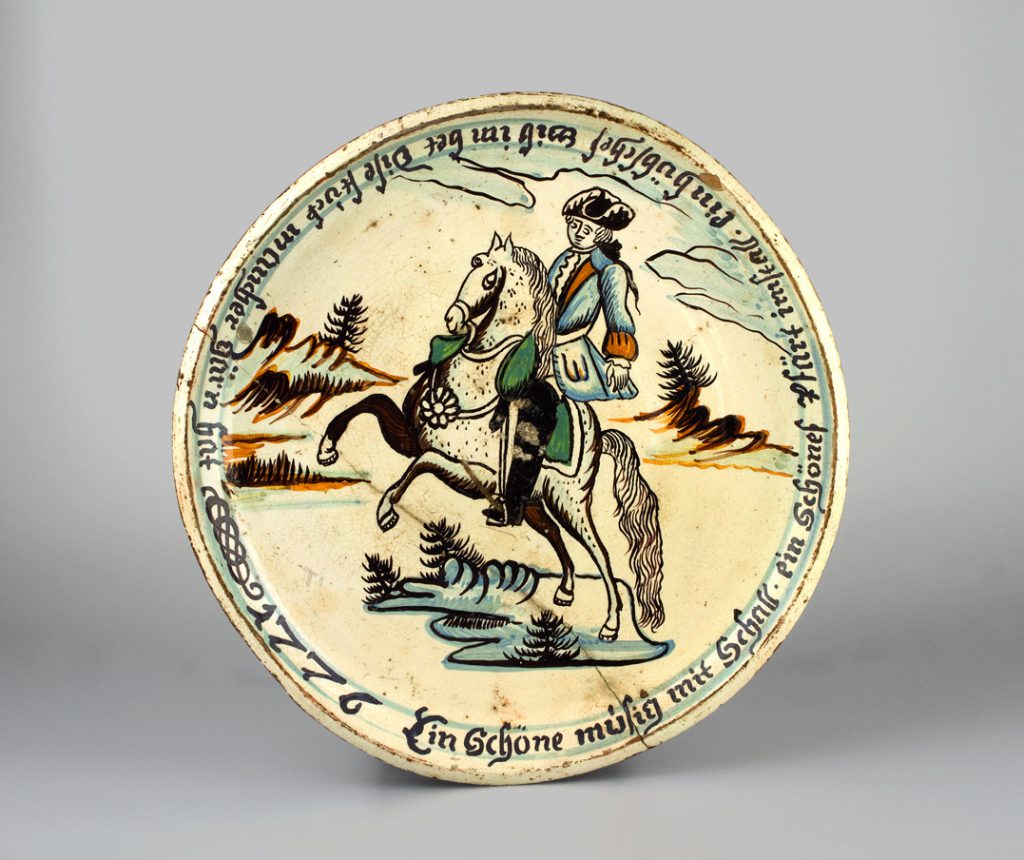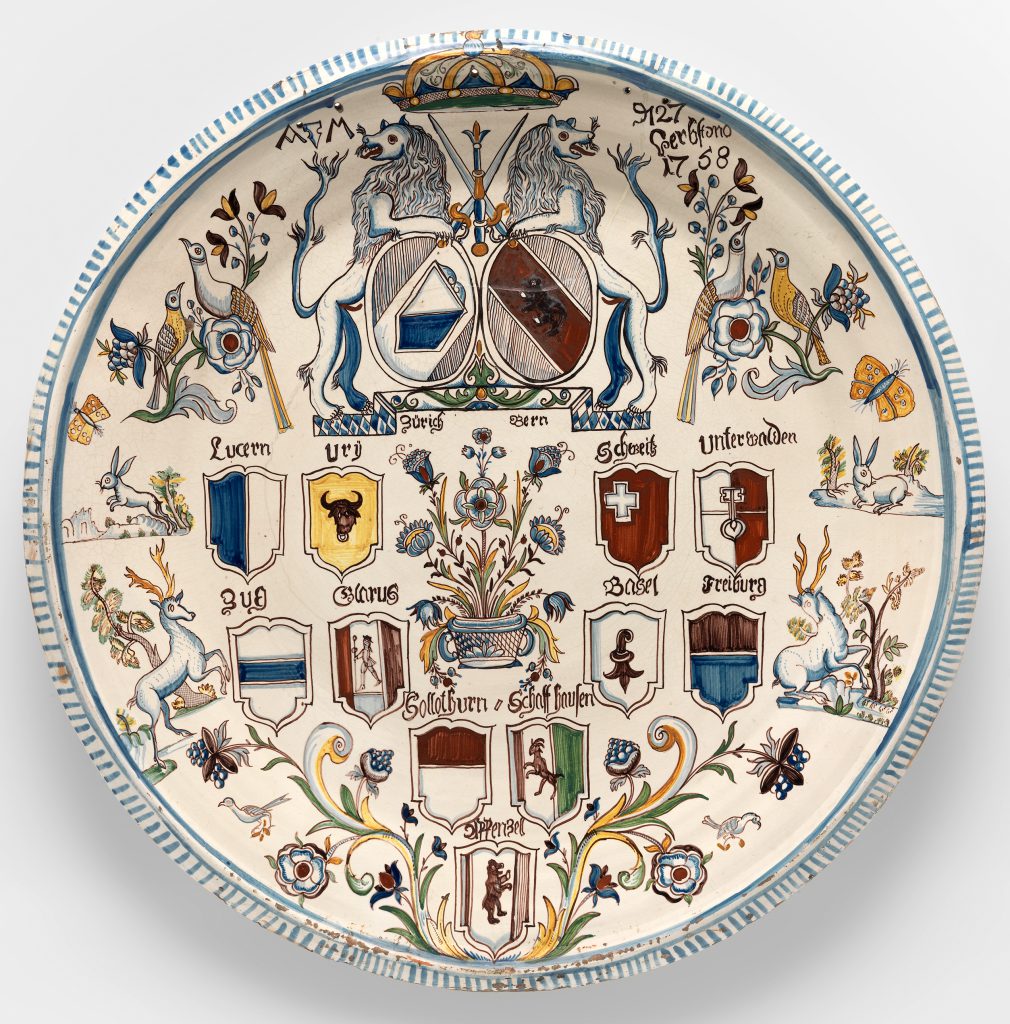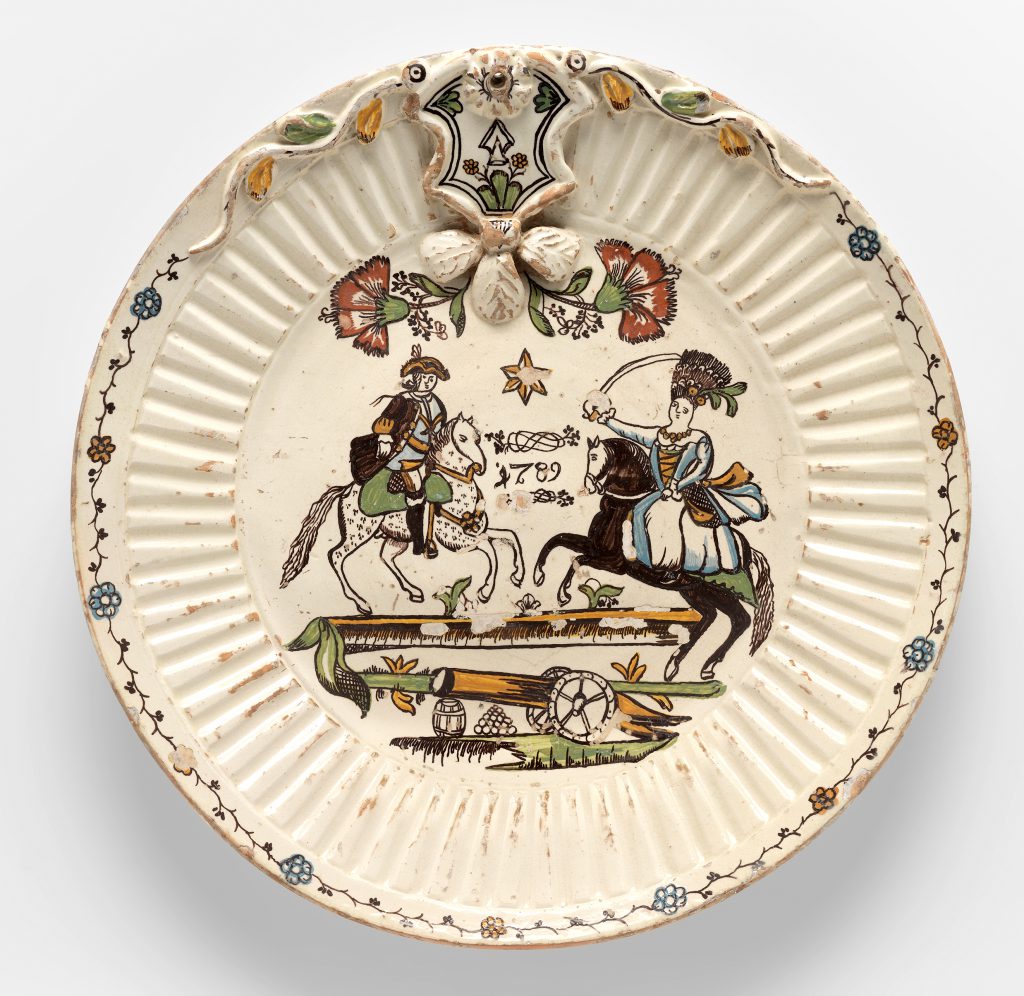
Blankenburg, Abraham Marti in CERAMICA CH
Andreas Heege, ]onathan Frey, Alfred Spycher, Andreas Kistler, 2023
Abraham Marti was born in 1718 in Fraubrunnen in the Bern-Mittelland district. He was the eldest son of potter Hans Rudolf Marti (1691–1742) and his wife, Anna Barbara Reutlinger (1699–1744). He died on 18th July 1792 in Blankenburg, in what is today the municipality of Zweisimmen. He had three younger brothers, Johannes, Jakob and Peter, who was born in 1741. Jakob (1736-1813) would later also work as a potter in Fraubrunnen.
Abraham Marti married Magdalena Hamm (1712–1784) from Münchenbuchsee on 25th November 1740 in Oberburg. In a letter by Hans Rudolf Marti written on the occasion of their wedding, they were given assurances that they could use the potters’ house and half of an adjacent house. The first christening known to have taken place was on 14th January 1742 and three more followed between then and 1746. The wedding and the marriage contract probably also meant that Abraham was able to take over his parents’ workshop in Fraubrunnen in 1740/41. Abraham’s father, Hans Rudolf, was only 51 when he died on 17th May 1742, and his mother, Anna Barbara, died at the even younger age of 45 on 4th October 1744. After her death, the family assets were divided among the four sons in 1745, with Abraham inheriting the family home and all debts registered against it. Probably as a result of the crippling debt, Abraham was forced to sell the house in 1746 to the legal guardian of his three brothers, master butcher and innkeeper Hans Georg Marti (1710–1754) from Fraubrunnen. While he received 1000 pounds from the sale of the house, it was not enough to clear the debt, which amounted to 1058 pounds. This meant that it even cost him money to sell the property. He must, however, have been able to continue renting it, as the Grafenried parish church register of March 1748 records the death of the only son of Abraham Marti, “the potter from Fraubrunnen”.
Although the reasons are unknown, (perhaps he simply abandoned his family for a time?) Abraham eventually left Fraubrunnen. The crisis may have been prompted by the death of his only son in 1748. He is known to have fitted a stove in Wimmis Castle (Bailiwick of Niedersimmental) in 1748, but there are no documents for the years 1749 and 1750.
This changes in 1751, and between then and 1757/58, there are ample sources that place Abraham Marti and his family in Saanen. However, firmly dated ceramic objects suggest that he had already begun to produce pottery there in 1749. While the exact location of his workshop is unknown, there is a small but significant range of pottery that can be associated with his Saanen phase of production. During that period, there was a change in style, where he moved away from blue-white towards polychrome underglaze brushwork decorations, which he used in a very expressive manner, combining them with distinct mottos. From that point on, the range of motifs on plates and shallow dishes became consolidated and Abraham Marti developed a standardised and recurring repertoire of vessels that would later vary only slightly.
There is evidence of various stove setting jobs for the period between 1757 and 1787 for the bailiff’s seat in the castle of Blankenburg and for the wider region, though very few of the original stoves have survived. In 1761 he had to attend the religious court of Zweisimmen to recognise his daughter Elisabeth. She had been the result of an extramarital affair between Abraham Marti and Margreth Wälten from Lenk and had been christened on 2nd July 1761 in the parish church of Zweisimmen. In the autumn of that year, Marti purchased a small house and a workshop building, later known as the “upper house”, in Betelried, a district of Blankenburg in what is now the municipality of Zweisimmen, for just 25 Bernese crowns. We can only assume that he had rented a workshop in the same community for the preceeding years, as he is noted in the sales deeds as resident of Betelried. In 1763 he spent 37 Bernese crowns on another semi-detached house with a barn immediately next to the first property, and this subsequently became known as the “lower house”. However, he only paid 7 crowns and owed the remaining 30. In 1784, Abraham’s wife Magdalena died at the age of 72, followed by Abraham himself eight years later, on 18. July 1792 at the ripe old age of 74.
After his death, Marti’s youngest daughter Elisabeth (1761–1805) let the “upper house” and workshop to potter Johann Jakob Hächler (1763–1811) from Hasle near Burgdorf and probably also worked (“served”) in his workshop, while remaining resident in the “lower house”. In 1806, a year after Elisabeth’s death in 1805, Hächler bought the “upper house” workshop building from the municipality of Fraubrunnen for just 80 Bernese crowns or 200 Swiss francs. The building combined a parlour and a second room, a kitchen, a hall, which was used as a potter’s workshop, and a pottery kiln all under one roof. It also had a small barn with two stables and a hayloft as well as a quarter Juchart (c. 900 m2) of land with trees and a garden. According to the 1806 register of inhabitants, the workshop appears to have flourished initially, as Hächler employed as many as three journeymen and an apprentice. His first wife, Katharina Dällenbach from Aeschlen, died in 1808, and Hächler married a widow, Susanna Weissmüller (1779–1839) from Zweisimmen, in 1810. Only one year later, Hächler himself died at the age of just 48. The “upper house” with the potter’s workshop was taken over by Hächler’s hometown of Hasle to clear his debts. While there was still a potter’s workshop on the premises in 1827, pottery production is highly likely to have ceased by then. The house was demolished at the end of the 19th century and the site was redeveloped in 1980. Acting on behalf of the estate of the late Elisabeth Marti, the authorities of Fraubrunnen sold the “lower house” in 1806 to fabric shearer Peter Allenbach for 300 crowns; it still survives today (Blankenburg, Hüsy-Stutz 6).

Some 230 ceramic objects housed in museums and collections in Switzerland, Germany and England today can be attributed to the production of Abraham Marti. The holdings in the BHM, MAG, MAHN and SNM are particularly worth mentioning. Forty-six bear dates between 1749 and 1789 (MAG AR 906), which corresponds to Marti’s time in Blankenburg. The earliest pieces exhibit clear ties to the Bern-Mittelland district and the region of Fraubrunnen (MAG R 172). The main identifying feature for Abraham Marti’s products are his initials. The most impressive example is in the collection of the Musée Ariana (MAG AR 932). Other ceramics where inscriptions and initials show that they were made for bailiffs and other high-ranking individuals in and around Blankenburg are also considered part of the same group. The objects show that Marti created vessels with a coat of white slip and blue or polychrome underglaze brushwork decoration, highly characteristic shapes and inscriptions that can be very clearly identified stylistically. The suggestion often found in the literature that these vessels are Blankenburg or Simmental “faience”, i.e. pottery with a lead-tin glaze and in-glaze painted decoration, is incorrect. Nor did some of the other groups of ceramics that were previously attributed to the Simmental valley come from Marti’s workshop (cf. Wyss 1966, 15–23, not attributable to the Simmental valley are Wyss 1966, Pl. 1 and 2, Figs 1–8). The “Simmental” label can only be applied to a very limited number and should in future be used exclusively on works by Abraham Marti.

The range of ceramics made by Abraham Marti that survive in museums today is dominated by typical shallow dishes that lack suspension hooks at the back, so they would have been displayed in dressers with plate racks. Other vessel shapes are extremely rare: the known pieces include two butter churns, a teapot, a bottle, two ink stands, two pots and several water dispensers and basins. Unfortunately, no archaeological finds of Abraham Marti’s ceramics have yet come to light, and because the site where the Betelried workshop once stood was redeveloped in 1980, there is no further information about the workshop itself or any potential production waste.
Abraham Marti’s family tree
Translation Sandy Haemmerle
References:
Heege/Frey/Spycher u.a. 2023
Andreas Heege/]onathan Frey/Alfred Spycher, Andreas Kistler, Keramik aus Blankenburg, Abraham Marti (1718–1792), ein bernischer Landhafner, Bd. 16 (Schriften des Bernischen Historischen Museums), Bern 2023.

